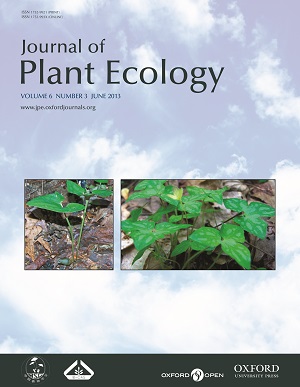Current Issue
-
 Volume 6 Issue 3
Volume 6 Issue 3
Asarum arifolia (left) and Hepatica nobilis (right) plants with seeds set. Asarum arifolia seeds are contained in a starchy pod at ground level whereas H. nobilis seeds are clustered at the end of an upright flower stalk. Asarum arifolia commonly produces one leaf whereas H. nobilis produces multiple leaves (photos by R. Warren).
IF: 3.9
CiteScore: 5.7
CiteScore: 5.7
Editors-in-Chief
Yuanhe Yang
Bernhard Schmid
Yuanhe Yang
Bernhard Schmid
CN 10-1172/Q
ISSN 1752-9921(print)
ISSN 1752-993X(online)
ISSN 1752-9921(print)
ISSN 1752-993X(online)







